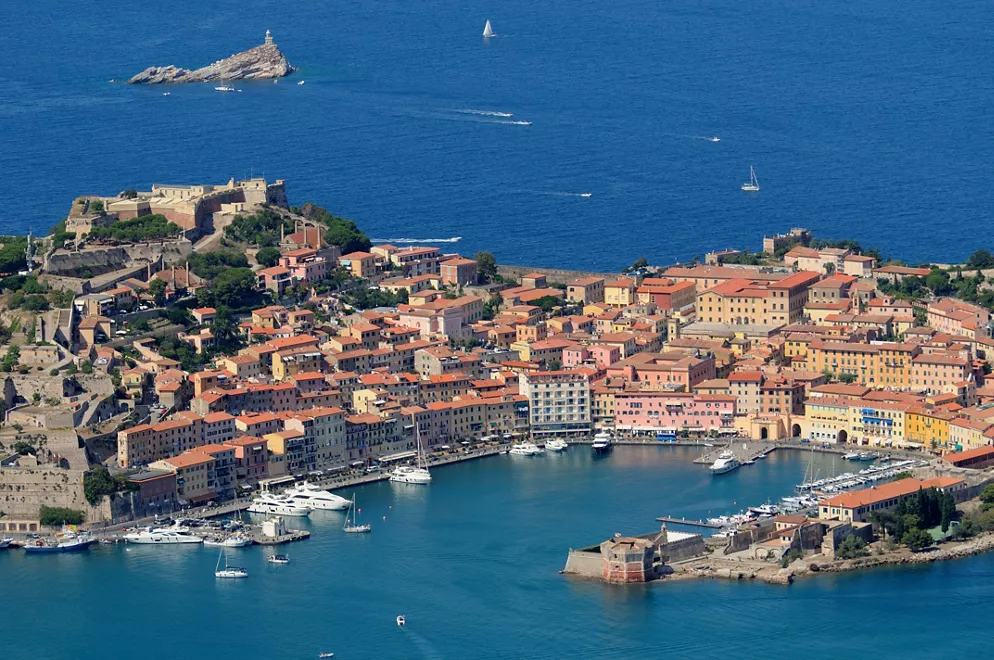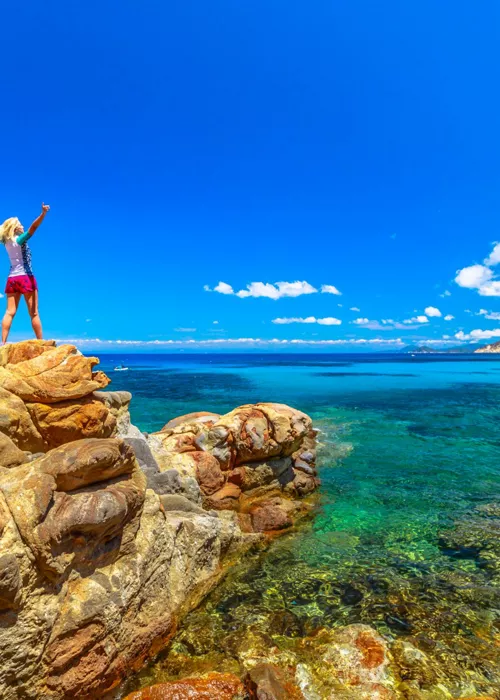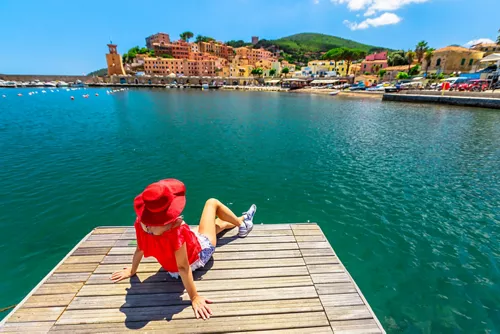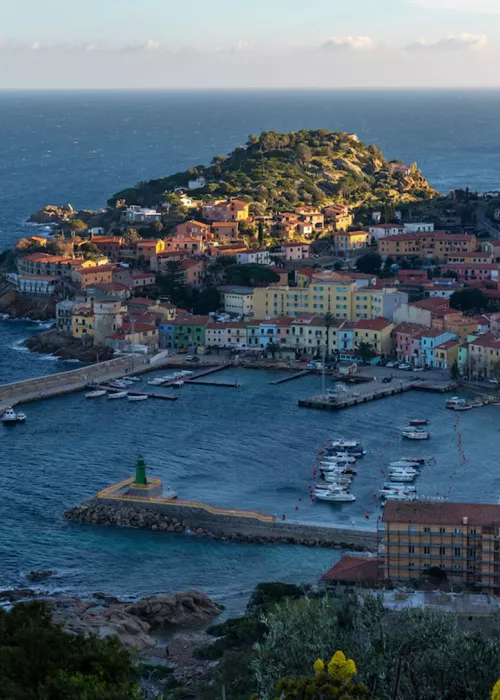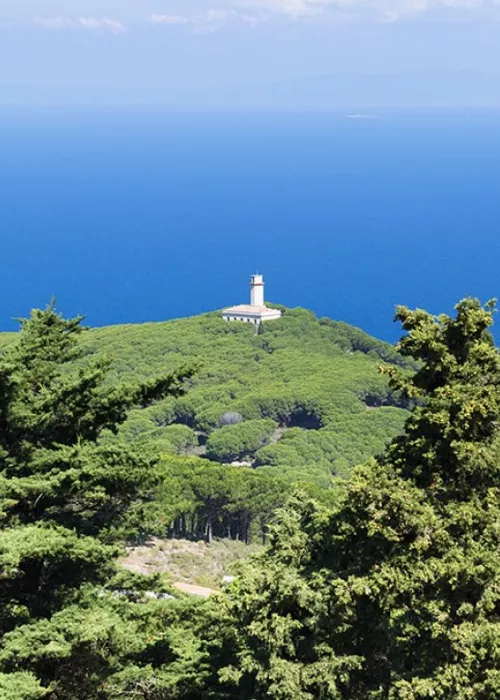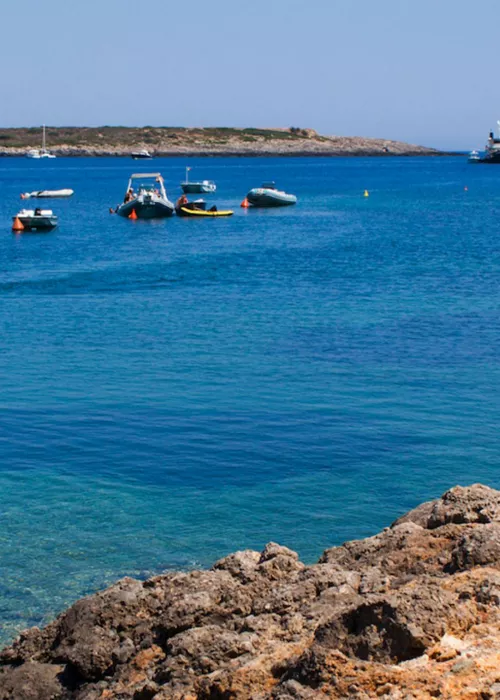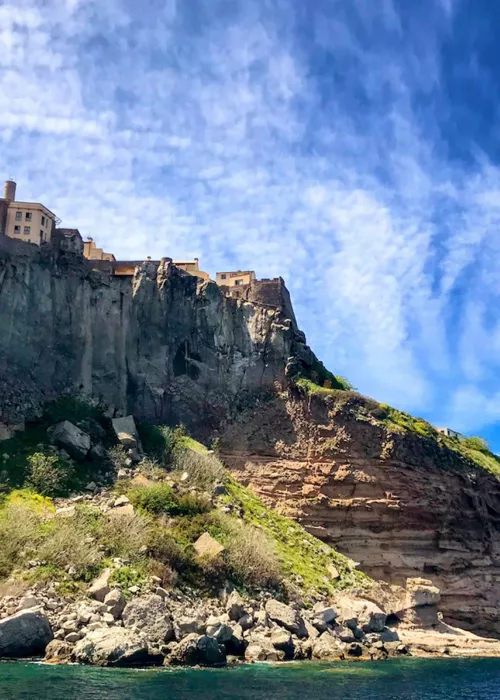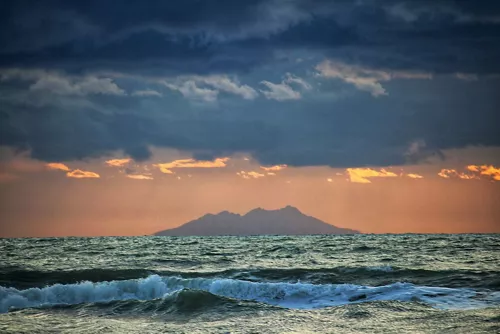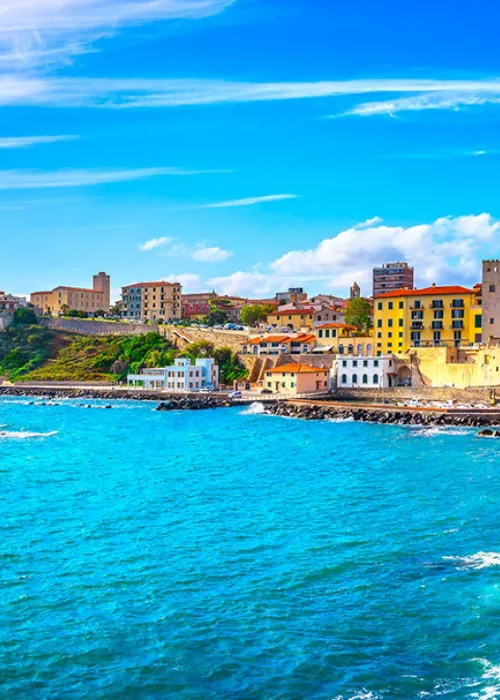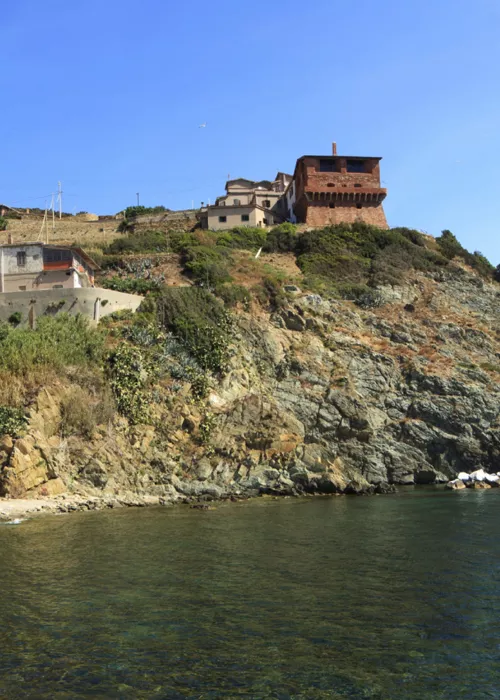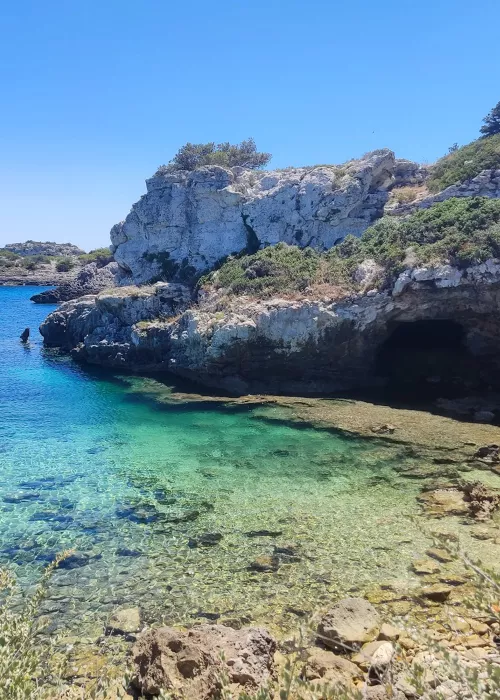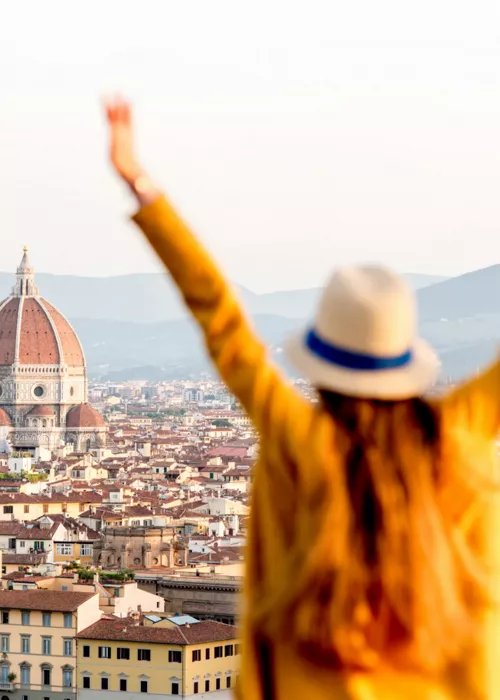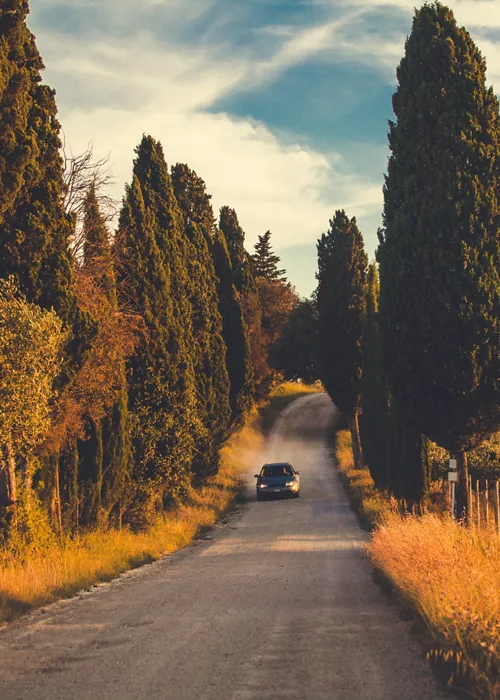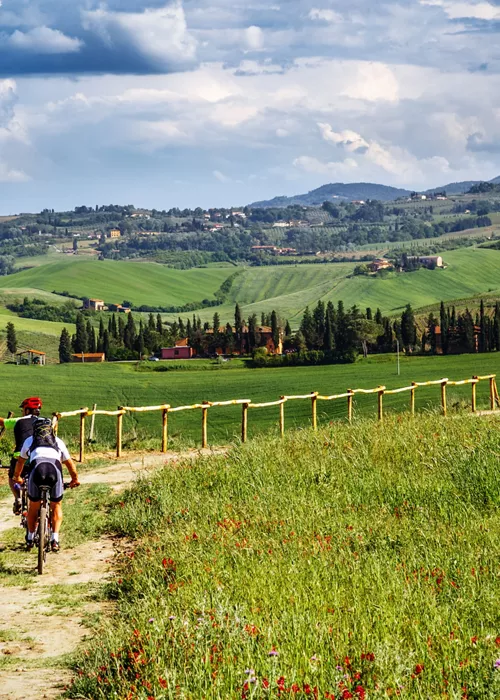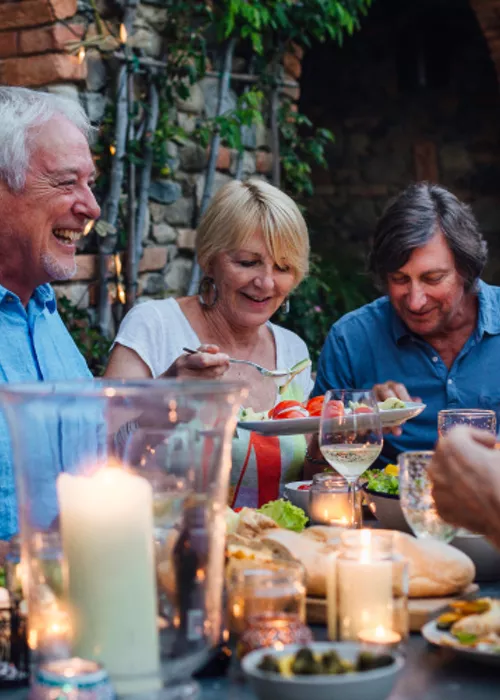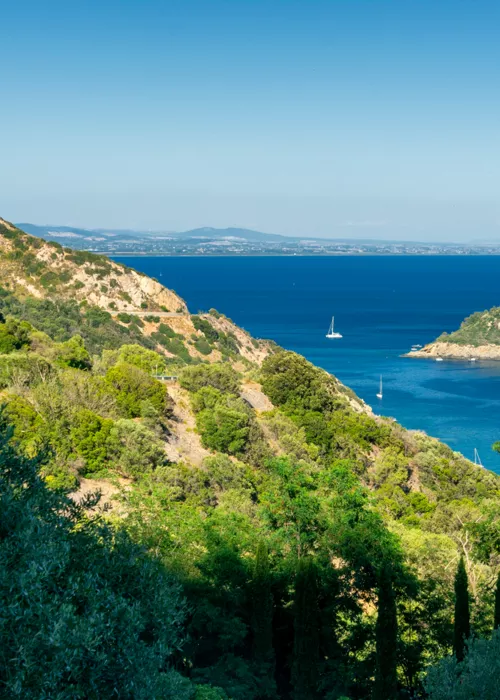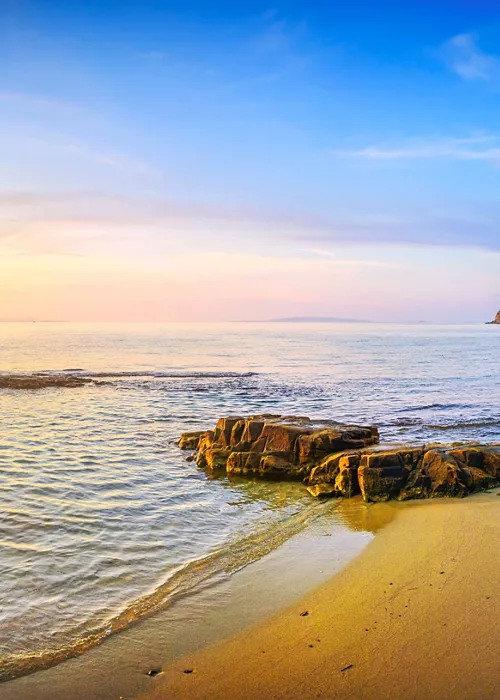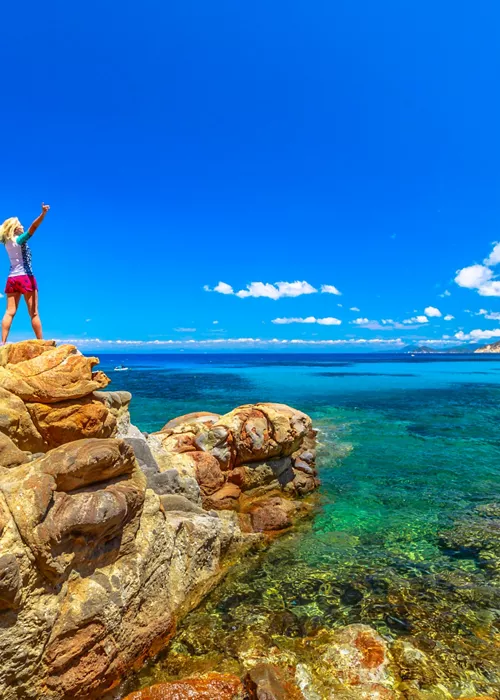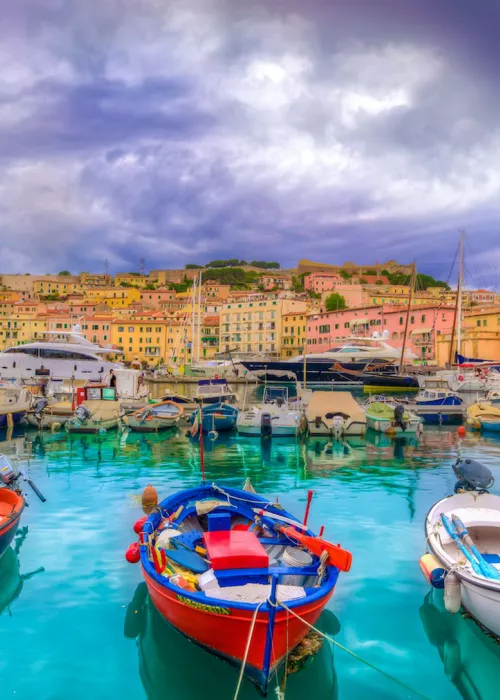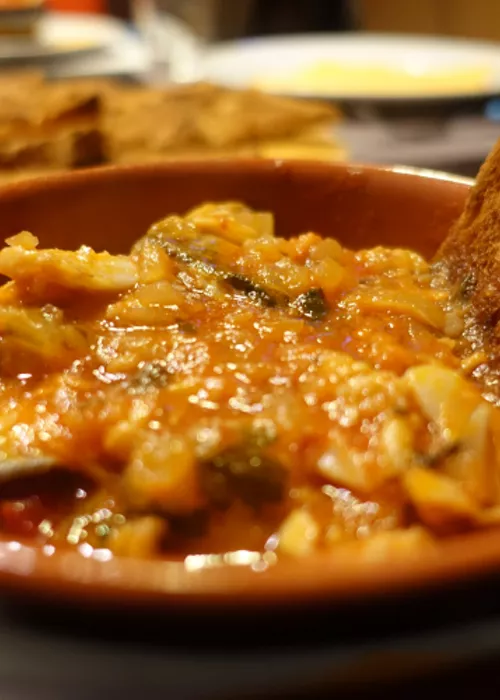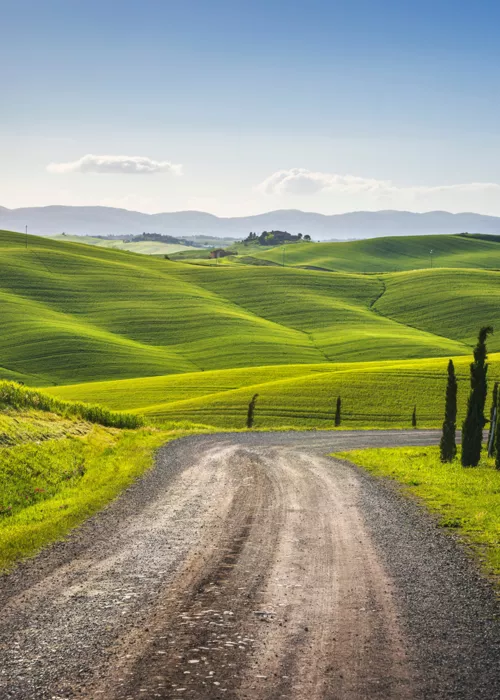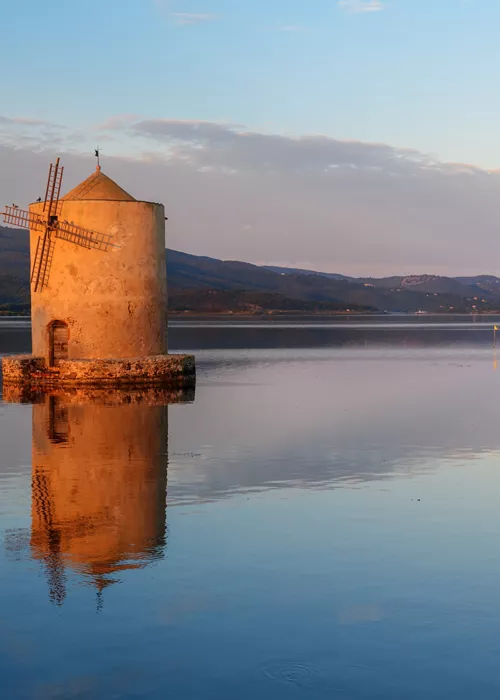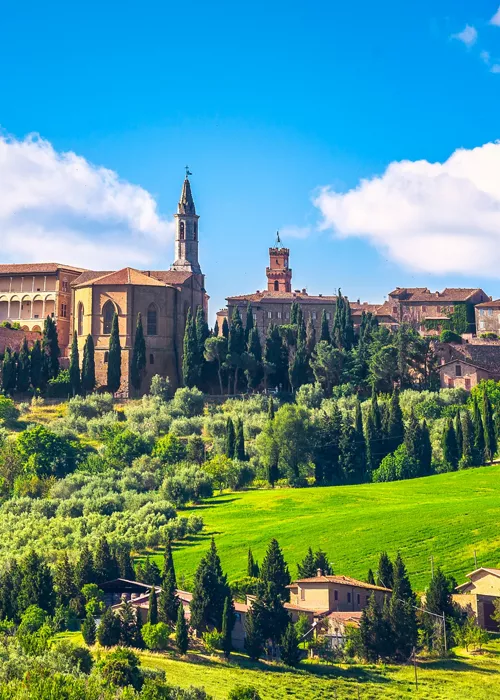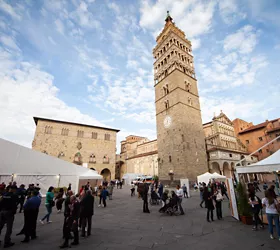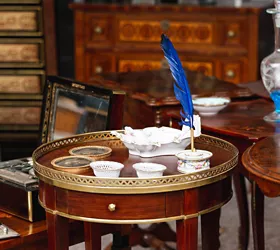The Tuscan Archipelago National Park, with its fairy-tale sea
4 minutes
There are seven major islands (Elba, Giglio, Giannutri, Capraia, Pianosa, Gorgona and Montecristo), to be explored along trekking trails in the mid-season, to be enjoyed by the sea during the summer for those who love snorkelling, diving and dolphin and whale watching. Because here we are in the Sanctuary of the Cetaceans.
The island of Elba
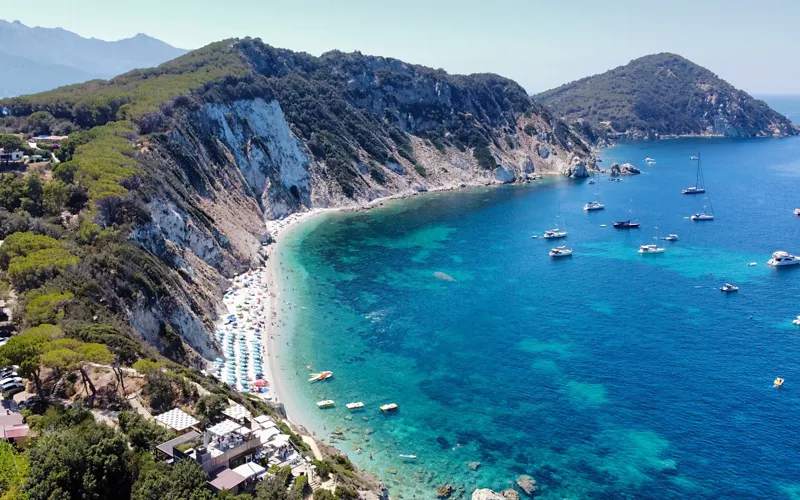
There are those who adore it for its sea, those for its hiking and mountain biking trails, those for its history, and those for its natural beauty. What is certain is that the island of Elba deserves to be visited in every season - there is no such thing as a real winter there - to appreciate its striking vegetation, its highlands and every one of its turquoise-bottomed inlets.
The Great Elban Crossing allows you to get to know the inland part of this fish-shaped island from top to bottom, whether you want to see it on foot, by mountain bike or even on horseback. To discover its flora, visit the Orto dei Semplici at the hermitage of Santa Caterina in Rio dell’Elba; the history of its iron mines is narrated at the Mineral Park in Rio Marina, while a walk to the Volterraio fortress, recently restored and open for visits, provides an extraordinary panorama of Elba and its sister islands.
The island of Giglio and the island of Giannutri
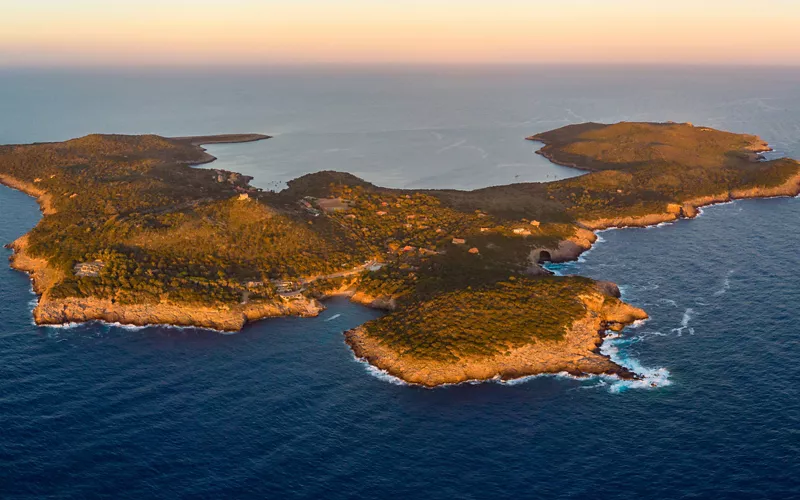
Opposite Mount Argentario, Giglio is a mountainous, verdant island with steep slopes among which are some beautiful beaches: Arenella and Cannelle, not far from Giglio Porto, while the large beach of Campese is on the other side.
From the charming mooring port, you can walk up to Giglio Castello, the fortified fortress with a pleasant hamlet, from which other very scenic paths unfold that allow you to reach the extreme points of the island, amidst vast expanses of Mediterranean scrub and a few vineyards where Ansonaco wine is produced.
Excursions leave from the port of Giglio for the island of Giannutri, a limestone rock with high, jagged coastlines on an exceptionally transparent sea, where the archaeological remains of a Roman villa from the 1st century BC can be found.
The island of Capraia
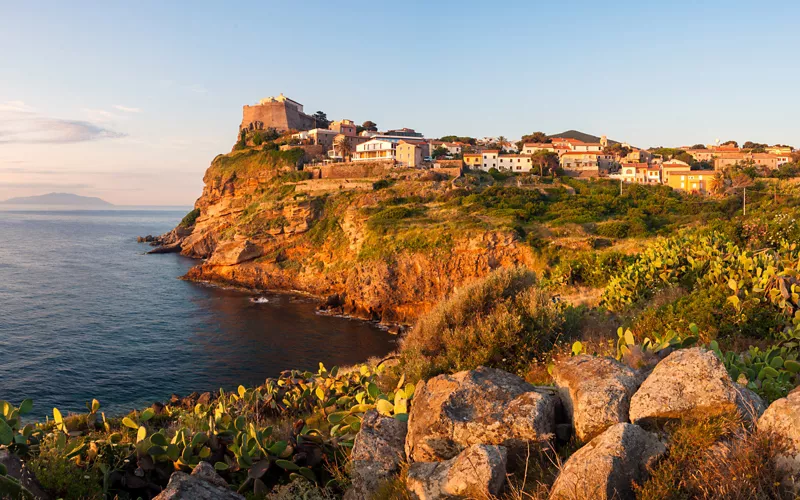
Capraia can be reached by taking a public ferry service from Livorno and then walking along a path that makes it possible to circumnavigate the island in 4-5 hours, with stops at several bays where you can swim, and long beautiful stretches along the sheer cliffs.
The red rocks of Punta dello Zenobito reveal the volcanic nature of the island. Around 300 people live on the island permanently, working in tourist accommodation and agriculture. The buildings that can be seen on the high ground above the harbour are those of the old agricultural penal colony, which closed in 1986. Just one day may not be enough to explore the island, so it would be better to organise an overnight stay in one of the numerous B&Bs and hotels in the harbour.
The island of Montecristo
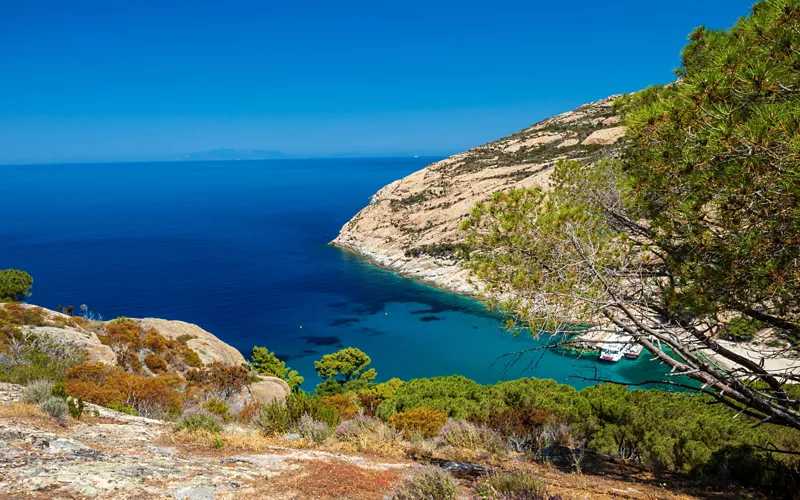
An untamed island and unspoilt nature reserve, Montecristo is today completely uninhabited, but there was a time when, around the 7th century AD, it was home to a community of monks, and the ruins of their church and abbey can be still seen today.
In the 19th century, the island was frequented by the entourage of the Florentine marquis Carlo Ginori, who, after buying the Taylor villa, made it his base for hunting trips. Today, the villa is used as guest accommodation for those who come to the island for scientific purposes. Montecristo can only be reached by booking the visits organised by the park authority with departures from Piombino, Elba, Porto S. Stefano and Giglio. Excursions can only be made along the three authorised paths, and bathing is prohibited.
The island of Gorgona
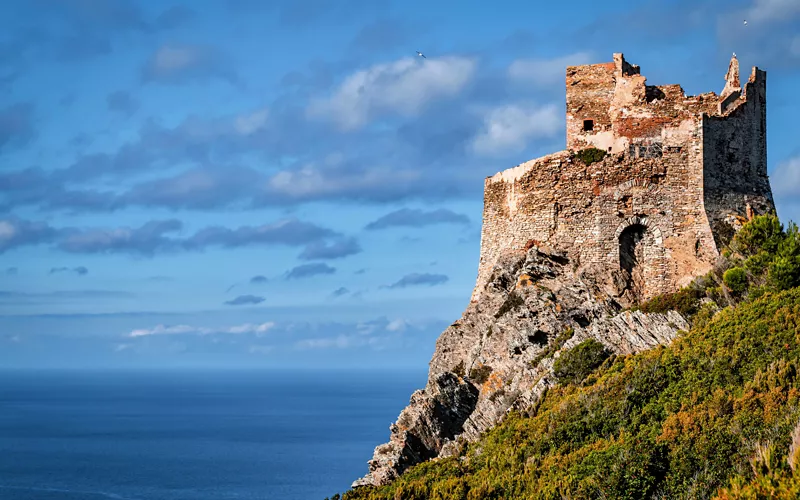
Gorgona is the smallest of the islands in the Tuscan Archipelago and has been a penitentiary since 1860. It can only be visited with guided tours departing from the port of Livorno organised by the Prison Administration in agreement with the park.
After arriving at Cala dello Scalo, you can see the ruins of the Roman Villa of Gorgona, then reach the panoramic terrace of Belvedere, where there is the only refreshment point on the island, and continue on to Torre Nuova, Punta Paratella, overlooking Cala Maestra, the island's cemetery and Rocca Vecchia, a fortification from the Pisan era. Prisoners live in semi-freedom and it is they who cultivate vegetable gardens and vineyards on terraces. Otherwise, it is all untouched nature on high cliffs where the herring gulls nest. Bathing is prohibited on the island, which has no beaches.
The island of Pianosa
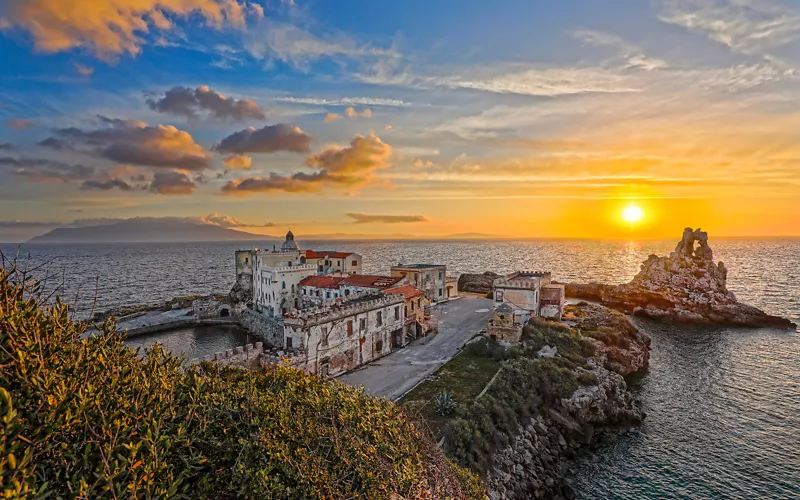
The name reveals that the island, unlike its sister islands in the Tuscan archipelago, is flat, and its coasts are low-lying and shaped by the sea into many extremely beautiful inlets.
Pianosa, home to a penitentiary until 1996, and therefore inaccessible for many years, has retained its biodiversity, and its seabed is covered with extensive posidonia meadows.
The small harbour of Pianosa, dominated by Fort Teglia, built by Napoleon, is considered by many to be the most beautiful in the world.
Today, the island can be reached by the Toremar navigation service from the island of Elba (Rio Marina): once docked, a park visitor centre provides information on excursions and places to see.

